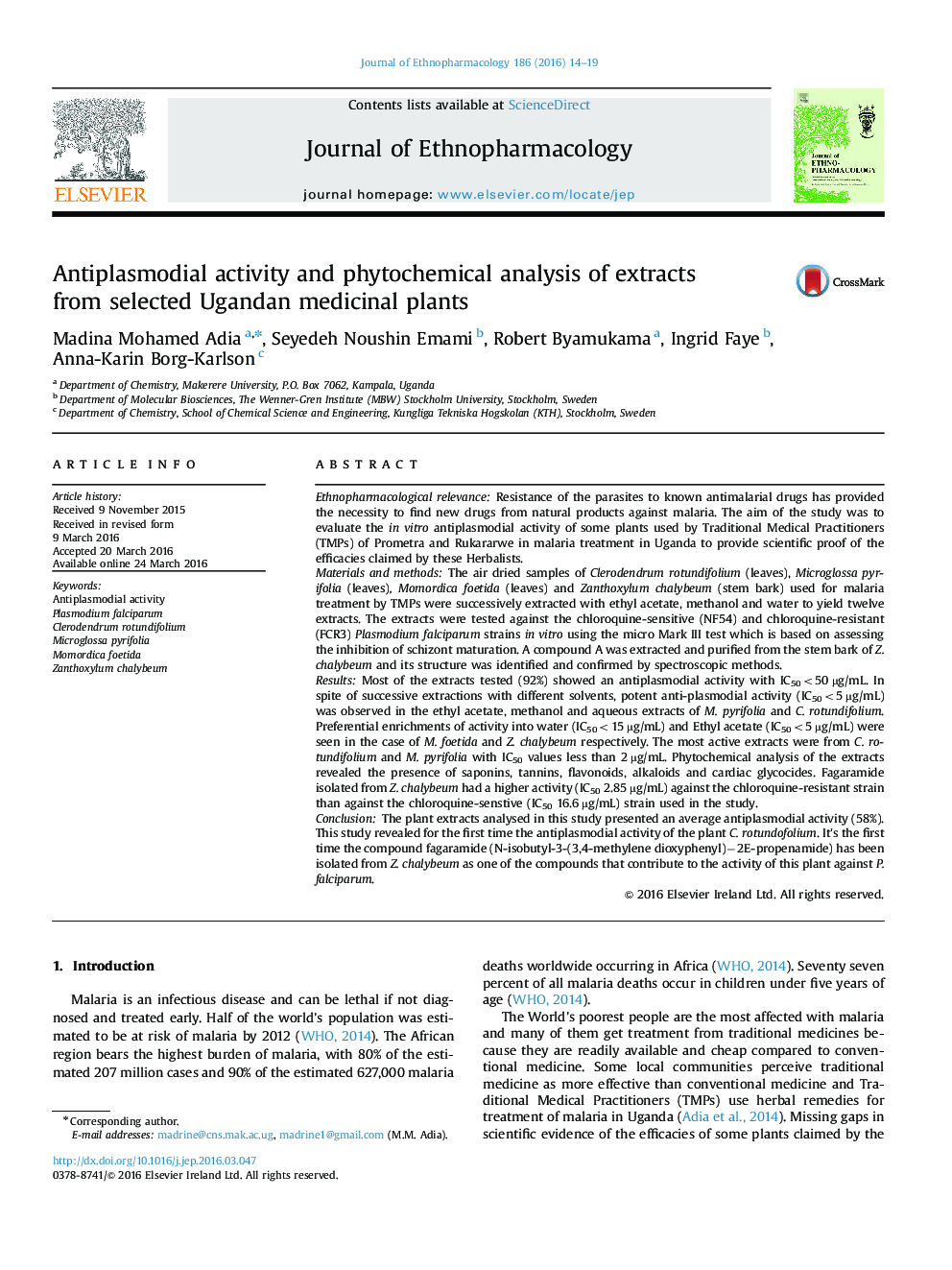| کد مقاله | کد نشریه | سال انتشار | مقاله انگلیسی | نسخه تمام متن |
|---|---|---|---|---|
| 2544696 | 1560376 | 2016 | 6 صفحه PDF | دانلود رایگان |
Ethnopharmacological relevanceResistance of the parasites to known antimalarial drugs has provided the necessity to find new drugs from natural products against malaria. The aim of the study was to evaluate the in vitro antiplasmodial activity of some plants used by Traditional Medical Practitioners (TMPs) of Prometra and Rukararwe in malaria treatment in Uganda to provide scientific proof of the efficacies claimed by these Herbalists.Materials and methodsThe air dried samples of Clerodendrum rotundifolium (leaves), Microglossa pyrifolia (leaves), Momordica foetida (leaves) and Zanthoxylum chalybeum (stem bark) used for malaria treatment by TMPs were successively extracted with ethyl acetate, methanol and water to yield twelve extracts. The extracts were tested against the chloroquine-sensitive (NF54) and chloroquine-resistant (FCR3) Plasmodium falciparum strains in vitro using the micro Mark III test which is based on assessing the inhibition of schizont maturation. A compound A was extracted and purified from the stem bark of Z. chalybeum and its structure was identified and confirmed by spectroscopic methods.ResultsMost of the extracts tested (92%) showed an antiplasmodial activity with IC50<50 µg/mL. In spite of successive extractions with different solvents, potent anti-plasmodial activity (IC50<5 µg/mL) was observed in the ethyl acetate, methanol and aqueous extracts of M. pyrifolia and C. rotundifolium. Preferential enrichments of activity into water (IC50<15 µg/mL) and Ethyl acetate (IC50<5 µg/mL) were seen in the case of M. foetida and Z. chalybeum respectively. The most active extracts were from C. rotundifolium and M. pyrifolia with IC50 values less than 2 µg/mL. Phytochemical analysis of the extracts revealed the presence of saponins, tannins, flavonoids, alkaloids and cardiac glycocides. Fagaramide isolated from Z. chalybeum had a higher activity (IC50 2.85 µg/mL) against the chloroquine-resistant strain than against the chloroquine-senstive (IC50 16.6 µg/mL) strain used in the study.ConclusionThe plant extracts analysed in this study presented an average antiplasmodial activity (58%). This study revealed for the first time the antiplasmodial activity of the plant C. rotundofolium. It's the first time the compound fagaramide (N-isobutyl-3-(3,4-methylene dioxyphenyl)−2E-propenamide) has been isolated from Z. chalybeum as one of the compounds that contribute to the activity of this plant against P. falciparum.
Figure optionsDownload high-quality image (301 K)Download as PowerPoint slide
Journal: Journal of Ethnopharmacology - Volume 186, 20 June 2016, Pages 14–19
